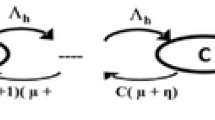Abstract
It is well known that the call admission policy can have a big impact on the performance of a wireless network. However, the nonlinear dependence of new calls and handoff calls makes the search for a better call admission policy – in terms of effective utilization – a difficult task. Many studies on optimal policies have not taken the correct dependence into consideration. As a result, the reported gains in those studies cannot be confirmed in a real network. In this paper we develop a solution to the problem of finding better call admission policies. The technique consists of three components. First, we search for the policy in an approximate reduced‐complexity model. Second, we modify the Linear Programming technique for the inherently nonlinear policy‐search problem. Third, we verify the performance of the found policy in the exact, high‐complexity, analytical model. The results shown in the paper clearly demonstrate the effectiveness of the proposed technique.
Similar content being viewed by others
References
V. Chvatal, Linear Programming (Freeman, New York, 1983).
D. Hong and S.S. Rappaport, Traffic model and performance analysis for cellular mobile radio telephone systems with prioritized and nonprioritized handoff procedures, IEEE Transactions on Vehicular Technology 35(3) (August 1986) 77–92.
Y.-B. Lin, S. Mohan and A. Noerpel, Queueing priority channel assignment strategies for PCS hand-off and initial access, IEEE Transactions on Vehicular Technology 43(3) (August 1994) 704–712.
S.-H. Oh and D.-W. Tcha, Prioritized channel assignment in a cellular radio network, IEEE Transactions on Communications 40(7) (July 1992) 1259–1269.
M.L. Puterman, Markov Decision Processes: Discrete Stochastic Dynamic Programming (Wiley, New York, 1994).
R. Ramjee, R. Nagarajan and D. Towsley, On optimal call admission control in cellular networks, in: Proc. of IEEE Infocom (1996) pp. 43–50.
S.S. Rappaport, The multiple-call hand-off problem in high-capacity cellular communications systems, IEEE Transactions on Vehicular Technology 40(3) (August 1991) 546–557.
S.S. Rappaport, Blocking, hand-off and traffic performance for cellular communication systems with mixed platforms, IEE Proceedings (1993) 389–401.
K.W. Ross and D.H.K. Tsang, Optimal circuit access policies in an ISDN environment: A Markov Decision approach, IEEE Transactions on Communications 37(9) (September 1989) 934–939.
M. Sidi and D. Starobinski, New call blocking versus handoff blocking in cellular networks, in: Proc. of IEEE Infocom (1996) pp. 35–42.
H. Takanashi and S.S. Rappaport, Dynamic base station selection for personal communication systems with distributed control schemes, in: Proc. of Vehicular Technology Conference (1997) pp. 1787–1791.
H.C. Tijms, Stochastic Modeling and Analysis: A Computational Approach (Wiley, New York, 1986).
C.H. Yoon and C.K. Un, Performance of personal portable radio telephone systems with and without guard channels, IEEE Journal on Selected Areas in Communications 11(6) (August 1993) 911–917.
Author information
Authors and Affiliations
Rights and permissions
About this article
Cite this article
Ho, C., Lea, C. Improving call admission policies in wireless networks. Wireless Networks 5, 257–265 (1999). https://doi.org/10.1023/A:1019107329380
Issue Date:
DOI: https://doi.org/10.1023/A:1019107329380




